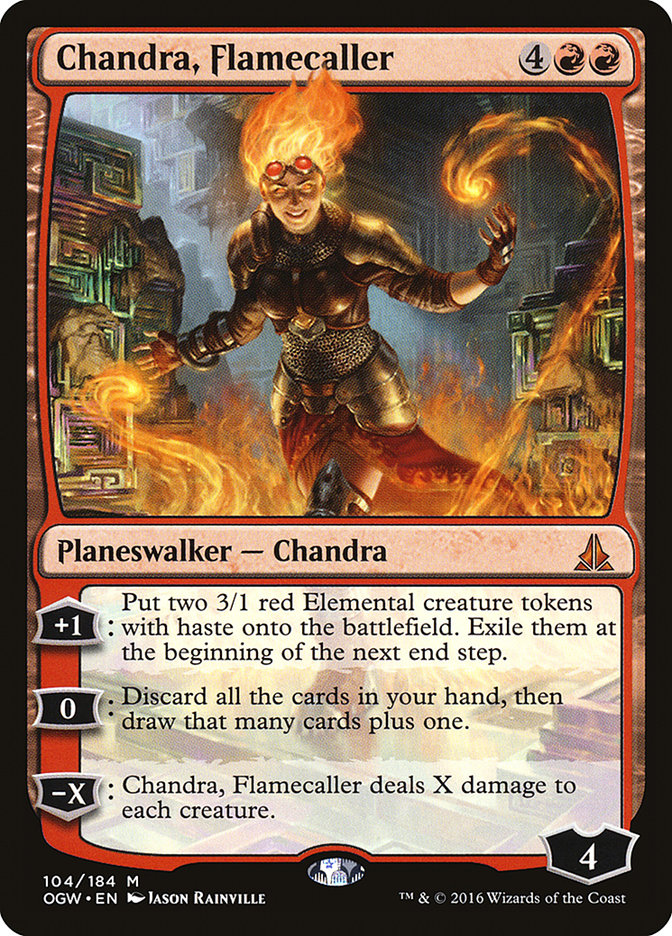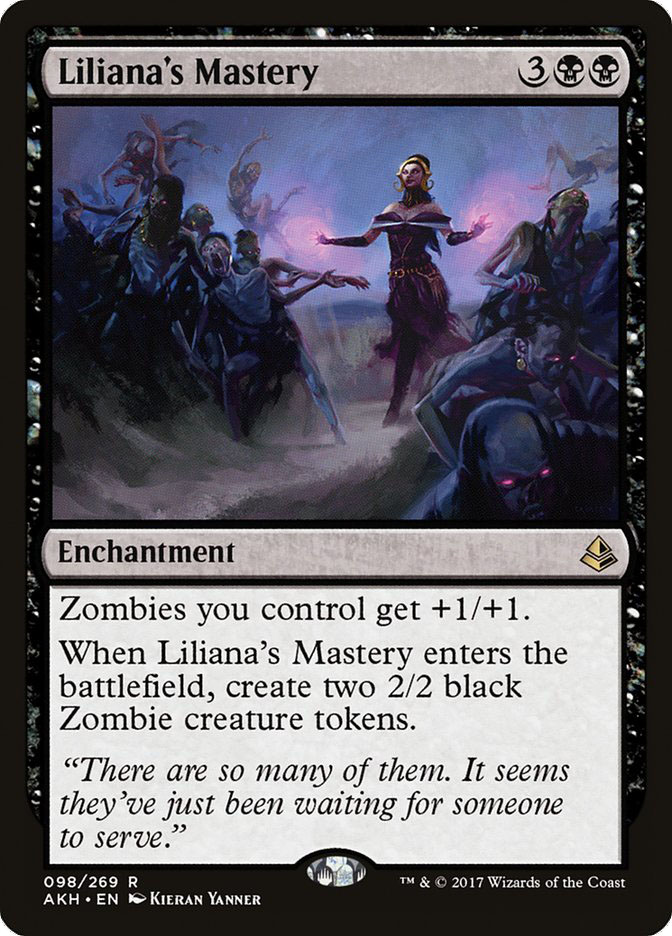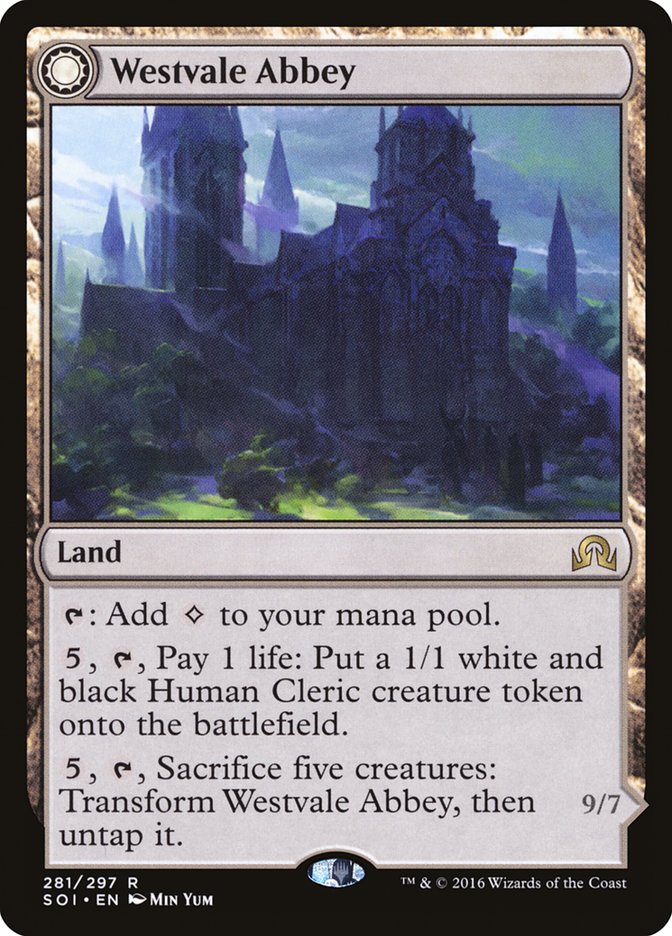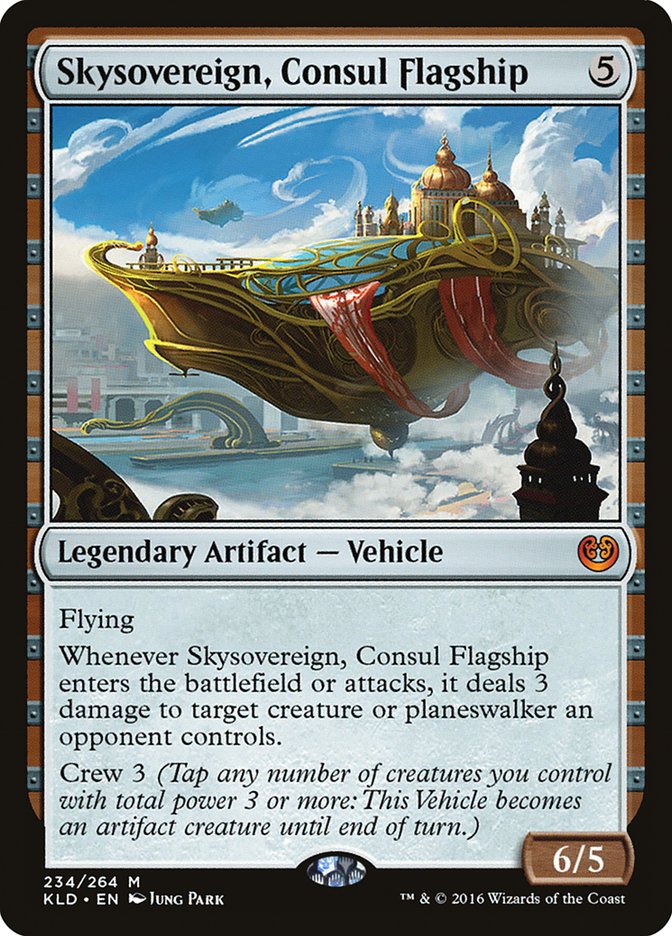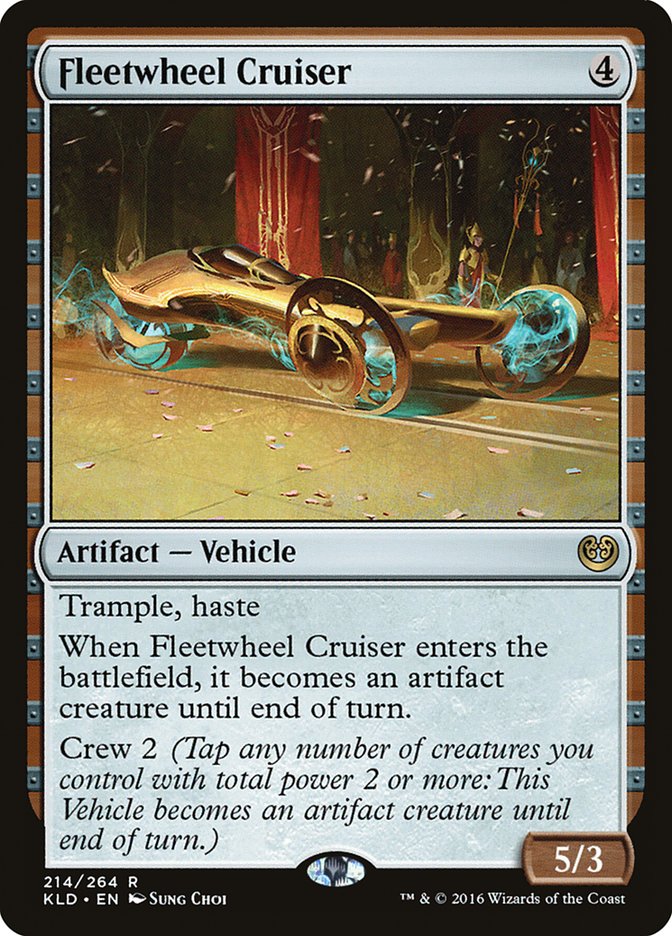Despite winning Pro Tour Amonkhet with Mono-Black Zombies, I never
did any sort of comprehensive deck guide. Standard adapted quickly, mostly
with Chandra, Flamecaller.
It’s not that you couldn’t overcome Chandra, Flamecaller, but trying to
beat a bunch of decks with those and a bunch of Aetherworks Marvel decks
was a bit too much. You were better off trying to do something else.
Zombies put up some Grand Prix Top 8s, but ultimately performed rather
poorly.
Then Aetherworks Marvel got banned. I might be able to relive my glory
days. We’re going to have Hour of Devastation to contend with
soon, but if anything, I’d expect Zombies to get a few new toys based on
how well-supported Zombies were in Amonkhet. Of course, there’s
still
#SCGINVI
in a few weeks, and I plan on running back 22 basic Swamps.
Why is Zombies Good?
Zombies is a midrange-leaning aggressive deck that typically beats up on
aggression and midrange. The low mana curve, plethora of removal, and focus
on creating a huge battlefield position tends to give Zombies the edge
against other creature-based decks.
You might think that a pile of removal is good against the deck that
consists of just creatures and removal, but you’re mostly wrong. If that
were the case, Zombies wouldn’t really be a deck. The real threats to the
deck are big threats that also deal with the battlefield to some degree.
Torrential Gearhulk, Glorybringer, and Chandra, Flamecaller all line up
well against Zombies and allow the decks that cast them to potentially go
over the top, but you have access to the best answers.
Trying to kill everything and grind out Zombies is a fool’s errand. They
have sticky threats, cards that can produce an entire army on their own,
and Cryptbreaker, which is a card I don’t think I’ve ever lost with if it’s
been active for a few turns.
In short, Zombies is great.
The Updated List
Creatures (24)
- 4 Relentless Dead
- 4 Diregraf Colossus
- 4 Cryptbreaker
- 4 Metallic Mimic
- 4 Lord of the Accursed
- 4 Dread Wanderer
Lands (24)
- 22 Swamp
- 2 Westvale Abbey
Spells (12)

With Aetherworks Marvel out of the way, a few things change. Standard
becomes a format with Zombies, Mardu Vehicles, U/R Control, G/B Energy, and
Temur Energy. Since those decks have one fewer threat to worry about, they
get to reconfigure their deck to suit the new metagame, which we’re also
doing. Notably, they pick up additional sideboard space, which they will
probably use to fight us.
The creature base is mostly set in stone. They are the best for
accomplishing your goal of swarming your opponent and pumping up your
creatures. There aren’t even really any other options.
Zombies wants eight or nine removal spells maindeck. With the majority of
Standard focusing on creatures, I’m leaning toward nine. The original lists
had four Fatal Pushes maindeck to fight the perceived threat of Mardu
Vehicles, but that was my big change for the Pro Tour. Without great ways
to turn on revolt, Fatal Push ends up falling short in a lot of matchups,
including the mirror. Killing a two-drop is often good, but future copies
of the card tend to not have many good targets.
I’m still on three Liliana’s Mastery, although that could change. It’s
clunky, and as I’ve mentioned, the Game 1s aren’t as grindy as the
post-sideboard games, so they tend to be faster. That said, it’s one of
your best topdecks, but I don’t want to flood on them.
Westvale Abbey gets better for a few reasons. Fatal Push gets better, which
means we’re playing fewer Grasp of Darknesses. That reduces the chance of
having those awkward turns where you need BBBB for Grasp of Darkness and
Relentless Dead.
Additionally, Westvale Abbey is better against the format in general. There
will be more midrange fights, which means it’s more likely the games will
devolve into Ormendahl games. If that ends up not being the case, I’d be
fine with playing 24 Swamps.
The sideboard has changed a decent amount.
Transgress the Mind is completely absent, as it was mainly there for
Aetherworks Marvel and I never wanted it against U/R Control anyway. The
tempo loss is huge and most of their cards do the same thing. Forcing them
to discard a card drawer, removal spell, or threat will often leave them
with that same effect. In order for discard to be effective, you need to be
able to strip them of something vital, not simply trade one-for-one.
You’re better off in the U/R matchup having the maximum amount of Grasp of
Darknesses post-sideboard to fight Torrential Gearhulk and Thing in the
Ice. Force them to commit time and resources into playing them and win the
exchange with a timely removal spell. From there, their position typically
crumbles.
Grasp of Darkness is the best removal spell against Glorybringer and the
various threats in the U/R Control deck, but Fatal Push is probably a
necessity against Mardu Vehicles and G/B Energy. There are some matchups
where you’ll want to go up to 12 removal spells post-sideboard, but most of
the time it’s about configuring your deck against their post-sideboard
configuration and finding which 6-10 removal spells are best.
Liliana, the Last Hope allows you to grind a little bit, but it is mainly
there to tag X/1s like Cryptbreaker and Toolcraft Exemplar. Scrapheap
Scrounger also helps you grind a bit and are good in matchups with a pile
of removal.
If Chandra, Flamecaller continues to be a threat (and I imagine it will),
then Fleetwheel Cruiser is what you want. Never helps, but it’s a much
worse answer than something that leaves a threat behind. You can also keep
open mana to return Scrapheap Scrounger, but there’s no guarantee you’ll
want Scrapheap Scrounger in every matchup that has access to Chandra,
Flamecaller.
A singleton Skysovereign, Consul Flagship rounds out the sideboard. There
is no shortage of powerful five-drop options, but Skysovereign is supposed
to be the one that annihilates the mirror. Backed up by additional removal
spells, I could see a world where that’s the case.
Kalitas, Traitor of Ghet is the card I’ve seen most people mention as a
possible sideboard option, but it hasn’t impressed me. The early threats
demand removal, which means you probably won’t have a bunch left over when
you play Kalitas. Additionally, if you’re in control mode, you probably
aren’t presenting them with many threats worth killing, which means they’ll
probably have something to kill Kalitas on sight. Kalitas also gives you no
value from killing tokens.
Kalitas, Traitor of Ghet is likely at its best when you’re pressuring them
and you top out your curve with it, but at that point, I’d much rather have
Skysovereign.
The Matchup Guide
G/B Energy
In: (on the play)

Out: (on the play)

Honestly, this is one of the easier matchups. Based on how bad this matchup
is for them, it wouldn’t surprise me if the Blooming Marsh deck of choice
ended up being Brennan DiCandio-style delirium. There’s a case for Shaun
McLaren’s Delirium deck, but that deck existed as it did because of
Aetherworks Marvel. You would have to rebuild it completely.
Anyway, G/B Energy is mostly doing what Zombies does (flooding the
battlefield with large threats and backing it up with removal), but Zombies
does it much better. They are often removal-light, which makes it even
easier to run over them with Cryptbreaker or Lord of the Accursed.
Their best plan is beating you with fliers, but their secondary plan of big
stuff plus Yahenni’s Expertise out of the sideboard is solid too. Ken
Yukuhiro’s deck from the Pro Tour is a good starting point, but his
sideboard needs some help for the matchup.
In: (on the draw)

Out: (on the draw)

On the draw, you’re going to be a bit more reactive, but not much changes.
Mardu Vehicles
In: (if they stay aggressive)

Out:

If they have Veteran Motorist in addition to Toolcraft Exemplar, you should
bring in some Liliana, the Last Hopes for Lord of the Accursed.
Mardu’s best plan is to beat you down. Their midrange planeswalker plan
isn’t very good against Liliana’s Mastery and company. Their best bet is to
pick you apart with removal on key turns and eventually stick something you
can’t deal with, such as Heart of Kiran, Archangel Avacyn, or Gideon, Ally
of Zendikar.
If they try to grind you out, it’s probably not going to work. That said,
that won’t stop them from trying, and if you don’t sideboard like they’re a
midrange deck, then they actually have a reasonable shot of winning.
Note that how they sideboard may depend on whether they are on the play or
draw.
In: (if they sideboard into a midrange deck)

Out:

Even if you sideboard for their beatdown plan and they surprise you with a
midrange build, you should still do fine, but you would preferably be able
to figure out what their plan is. A hedge is probably closer to right if
you’re in the dark, but some of their maindeck card choices and how they
approach the matchup will give you a better indicator of what they’re
planning on doing.
For example, if they are clearly playing aggressively, they will probably
stick with that in the post-board games, especially if they have far too
many aggressive tools to take out against you. If they appear to have a
slower build with Walking Ballista and Canyon Slough, you can bet they’ll
have some midrange elements in their sideboard.
Mono-Black Zombies
In: (on the play)

Out:

Liliana, the Last Hope is great, especially on the play, because she allows
you to take out some of their best threats and cement your advantage.
Either you make combat a nightmare for them or make their removal nearly
irrelevant.
The person who is able to notch their opponent in creature sizing is a huge
favorite, so go after the cards that allow them to do that. Cryptbreaker,
Metallic Mimic, and Lord of the Accursed are particularly scary, whereas
something like Relentless Dead often does very little, especially if
they’re behind.
Note that you can use a Dark Salvation targeting them to kill their Turn 1
Cryptbreaker.
In: (on the draw)


Out:


When they’re on the play, Metallic Mimic is likely to get gobbled up by
Liliana, the Last Hope, so it’s dangerous to keep it in. Additionally, you
will probably be forced into reacting to what they’re doing, so you might
not have the window to play Metallic Mimic on Turn 2 anyway. Instead,
settle in for a longer game when you’re on the draw. Remove their key
threats and don’t waste removal on inconsequential creatures.
Since they’re on the play, they’ll be able to protect Cryptbreaker from
Liliana, the Last Hope with a Lord of the Accursed, so Liliana is less
likely to make an impact when you’re on the draw.
Temur Energy
In: (on the play)

Out: (on the play)

Their decks are going to vary, so this is just a general guideline.
If they have Longtusk Cub, you should keep in an additional Fatal Push. If
they sideboard into a heavy midrange deck like Mardu Vehicles could,
consider sideboarding how I would for Mardu’s midrange configuration.
In: (on the draw)

Out: (on the draw)

Being on the draw is the same deal as most matchups. They typically have
some amount of planeswalkers, so Fleetwheel Cruiser might be worth it once
they board in Chandra, Flamecaller and Sweltering Suns or whatever
equivalent they have.
Overall, this is kind of a tough matchup, mostly because of Glorybringer.
It by itself is beatable, but it’s basically like G/B Energy if it had a
top end you were actually scared of. If they put you on the backfoot,
there’s no guarantee you have the luxury of playing around Glorybringer.
U/R Control
In:

Out:

Play or draw doesn’t matter too much here.
Our plan at the Pro Tour was Gonti, Lord of Luxury, but that’s only
effective if their plan is to grind you out. As the U/R Control lists got
more refined, they turned to things like Glorybringer, Thing in the Ice,
and Chandra, Flamecaller to pressure and go over the top.
Since their plan is less contingent on grinding and more on putting you on
a clock, I could see fewer copies of Scrapheap Scrounger and more ways to
interact with their potential threats. However, not everyone is going to be
on the same plan. Plus, you still want some grinding capability. If you’re
both removing each other’s threats, the games are going to go longer and
you’ll want a recursive threat.
***
In general, I keep the amount of reactive cards in my deck to a minimum
when I’m on the play, which is something I’m going to delve deeper into
later this week. Overall, it’s a reasonable rule of thumb to have when
playing a midrange creature deck. When you’re on the play, executing your
own game plan should be your main priority. Worrying too much about what
they’re doing is only going to get in your way. At some point, you’re going
to want to interact with your opponent, but not nearly as often as you have
to when you’re on the draw.
Anyway, I sure hope Standard ends up in a good place. From what I see,
that’s probably going to be the case, and I couldn’t be happier to be
shuffling up 22 basic Swamps again.




